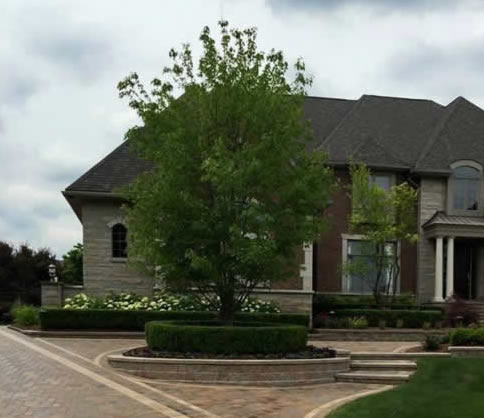 Brick Retaining Wall Designs: The Two Most Common Construction Methods
Brick Retaining Wall Designs: The Two Most Common Construction Methods
Brick retaining walls can generally be divided into two subgroups: cavity walls and block core walls. The results are more or less the same, and the key differences are in the materials used and method of construction employed. In terms of the bottom line these differences can make a significant impact.
As a homeowner, educating yourself about these differences is definitely worth the small time investment it requires to learn. Below we’ll break down retaining wall designs and arm you with a little bit of knowledge about these two methods.
Cavity Wall
The cavity wall method of constructing a retaining wall was first introduced in Europe in the 19th century, so it’s been around for a while. Cavity walls are really quite simple when it comes down to it; they consist of two ‘skins’ which are separated by an empty space or “cavity”. This gap is often filled with grout or concrete, and is what makes it becomes a solid structure. Without the fill your wall is not going to have the type of structural integrity that it needs. This can mean brick is required from top to bottom on both sides of the retaining wall to seal the cavity, which increases the cost of materials and labor.
Block Core Wall
This approach is far more common since the invention of the concrete masonry unit or CMU. In a block core design, the wall is built out of CMU block (which holds steel within its cells filled with concrete). The brick is laid on the outside of the wall and the solid CMU blocks are flush against the backfill or earth the wall is retaining. Because brick is laid only on the exterior parts of the wall, less materials are used. In comparison to the cavity wall, the block core option tends to have lower cost overall.
When you stack these two up against each other, the obvious winner seems to be the block core. It’s affordable for those on a lower budget, plus it’s strong and relatively easy to waterproof. Thinking in terms of longevity, the strength of this wall is also a nice feature for anyone concerned with the long term effects of moisture. This can be a real issue for anyone living in a climate with high rainfall.
There is additional variability when it comes to the style of brick you use regardless of which design you go with. Whole brick, half brick, and a thin brick veneer are all options. Which you choose is going to be dictated by your budget and some structural considerations.
Need a Clinton Twp Brick Paver to Install a Retaining Wall?
If you are looking for a Clinton Twp brick paver to install a retaining wall, look no further than PMS Diversified Construction Services. We would be happy to write you an estimate or to share our expertise by simply answering a question.
PMS is located in Sterling Heights, MI and services all cities throughout Metro Detroit.
